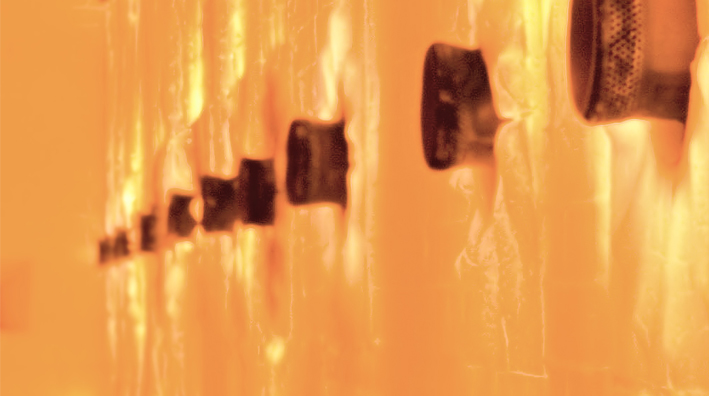Segment Profile
The Chemicals segment consists of the Petrochemicals and Intermediates divisions. It supplies the other segments with basic chemicals and intermediates, contributing to the organic growth of our key value chains. Alongside internal transfers, our customers mainly come from the chemical and plastics industries. We aim to further expand our competitiveness through technological leadership and operational excellence.
Electrically heated steam cracker furnace
We have signed an agreement with SABIC and Linde to develop and pilot electrically heated steam cracker furnaces. Together, we developed concepts to replace the fossil fuels used in the heating process with renewable energy. We want to make a significant contribution to reducing carbon emissions in the chemical industry with this innovative and promising solution. If energy from renewable sources is used, the new technology has the potential to almost completely avoid CO2 emissions.

Sales
€13,579 million
2020 €8,071 million
EBIT before special items
€2,974 million
2020: €445 million
|
Products |
Customer industries and applications |
|---|---|---|
Petrochemicals |
Ethylene, propylene, butadiene, benzene, alcohols, solvents, plasticizers, alkylene oxides, glycols, acrylic monomers, styrene and polystyrene, styrenic foams, superabsorbents |
Chemical, plastics, construction, detergent, hygiene, automotive, packaging and textile industries; production of paints, coatings, cosmetics, oilfield and paper chemicals Use in the BASF Verbund |
Intermediates |
Basic products: butanediol and derivatives, alkylamines and alkanolamines, neopentyl glycol, formic and propionic acid Specialties: Specialty amines such as tertiary butylamine and polyetheramine, gas treatment chemicals, vinyl monomers, acid chlorides, chloroformates, chiral intermediates |
Chemical, plastics, coatings, construction, automotive, wind energy, pharmaceutical and agricultural industries; production of detergents and cleaners as well as crop protection products and textile fibers Use in the BASF Verbund |
Product |
Europe |
North America |
Asia Pacific |
South America, Africa, |
Annual |
|||||||||
|---|---|---|---|---|---|---|---|---|---|---|---|---|---|---|
Acrylic acid |
1,510,000 |
|||||||||||||
Alkylamines |
|
250,000 |
||||||||||||
Formic acid |
|
305,000 |
||||||||||||
Benzene |
|
910,000 |
||||||||||||
Butadiene |
|
680,000 |
||||||||||||
Butanediol equivalents |
|
550,000 |
||||||||||||
Ethanolamines and derivatives |
|
|
440,000 |
|||||||||||
Ethylene |
|
3,480,000 |
||||||||||||
Ethylene oxide |
|
1,445,000 |
||||||||||||
Neopentylglycol |
|
255,000 |
||||||||||||
Oxo-C4 alcohols (calculated as butyraldehyde) |
|
1,625,000 |
||||||||||||
PolyTHF® |
|
350,000 |
||||||||||||
Propionic acid |
|
|
180,000 |
|||||||||||
Propylene |
|
2,630,000 |
||||||||||||
Styropor®/Neopor® |
|
|
545,000 |
|||||||||||
Superabsorbents |
565,000 |
|||||||||||||
Plasticizers |
|
|
595,000 |
|||||||||||
|
||||||||||||||
